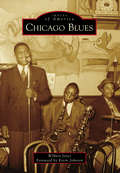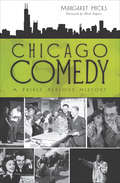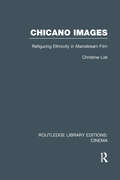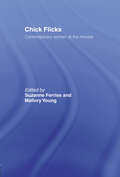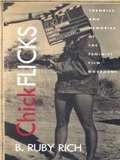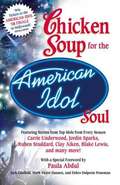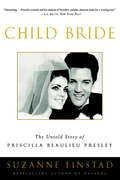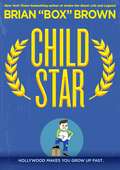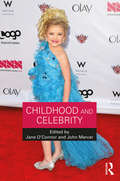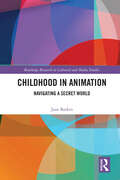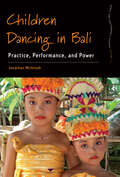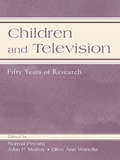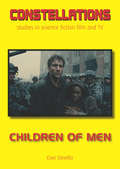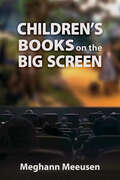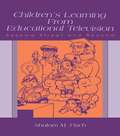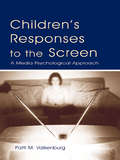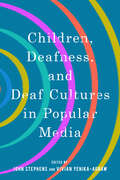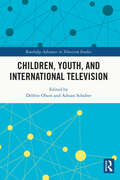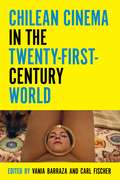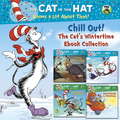- Table View
- List View
Chicago Blues
by Wilbert Jones Kevin JohnsonBlues was once described as the devil's music. It eventually became some of the most beloved American music that was embraced by a global audience. Originating in African American communities in the South in the late 1800s, it was inspired by gospel and spiritual music sung by field hands and sharecroppers who worked on plantations. During the Great Migration from the early 1900s to the mid-1970s, many African Americans moved north for a better quality of life. Chicago was one of America's leading industrialized cites, and manufacturing jobs were plentiful and provided better wages than sharecropping. Many blues musicians who worked as field hands and sharecroppers moved to Chicago not only for those jobs, but also to pursue their love of music. Greats such as Big Bill Broonzy, Tampa Red, Muddy Waters, Jimmy and Estelle Yancey, Robert Nighthawk, Elmore James, Willie Dixon, Earl Hooker, Koko Taylor, Sly Johnson, Buddy Guy, Howlin' Wolf, Eddie Burns, Zora Young, Junior Wells, and a host of others came with their own styles and gave birth to Chicago blues.
Chicago Comedy: A Fairly Serious History
by Margaret Hicks&“An overview of Chicago&’s comedic legacy, from its early days . . . to its present day position as a breeding ground for some of comedy&’s biggest names&” (Gapers Block). Famous for being a city of broad shoulders, Chicago has also developed an international reputation for split sides and slapped knees. Watch the Chicago style of comedy evolve from nineteenth-century vaudeville, through the rebellious comics of the fifties and into the improvisation and sketch that ushered in a new millennium. Drawing on material both hilarious and profound, Second City alum Margaret Hicks touches on what makes Chicago different from other cities and how that difference produced some of the greatest minds comedy will ever know: Amos &‘n&’ Andy, Jack Benny, Lenny Bruce, Del Close, John Belushi, Tina Fey, Stephen Colbert and so many, many more. Includes photos!
Chicano Images: Refiguring Ethnicity in Mainstream Film (Routledge Library Editions: Cinema)
by Christine ListProviding textual analysis of 12 feature films written and directed by filmmakers who explore aspects of the Chicano cultural movement, this book discusses films including Cheech and Chong's Still Smokin' (1983), El Norte (1985), and Break of Dawn (1988). The text analyzes the portrayal of Chicano, or Mexican American, identity in films by chicanos. Part historiography, part film analysis, part ethnography, this book offers a compelling story of how Chicanos challenge, subvert and create their own popular portrayals of Chicanismo. Historical stereotypical images in Hollywood films are discussed alongside contemporary images portrayed by Hollywood studios and independent Chicano filmmakers. The author examines the way in which newer films "construct new representations of Chicano culture" and present a greater variety of images of Chicanos for mainstream audiences. Originally published in 1996, this authoritative volume provides a full history of the Chicano cultural movement beginning in the 1960s as well as information on the development of Mexican American film production.
Chick Flicks: Contemporary Women at the Movies
by Mallory Young Suzanne FerrissFrom An Affair to Remember to Legally Blonde, "chick flicks" have long been both championed and vilified by women and men, scholars and popular audiences. Like other forms of "chick culture," which the editors define as a group of mostly American and British popular culture media forms focused primarily on twenty- to thirtysomething, middle-class—and frequently college-educated—women, chick flicks have been accused of reinscribing traditional attitudes and reactionary roles for women. On the other hand, they have been embraced as pleasurable and potentially liberating entertainments, assisting women in negotiating the challenges of contemporary life. A companion to the successful anthology Chick Lit: The New Woman’s Fiction, this edited volume consists of 11 original essays, prefaced by an introduction situating chick flicks within the larger context of chick culture as well as women’s cinema. The essays consider chick flicks from a variety of angles, touching on issues of film history, female sexuality (heterosexual and homosexual), femininity, female friendship, age, race, ethnicity, class, consumerism, spectatorship, pleasure and gender definition. An afterword by feminist film theorist Karen Hollinger considers the chick flick’s transformation from the woman’s films of the ’40s to the friendship films of the ’80s and those of the "return to the classics" trend of the ’90s, while highlighting the value of the volume’s contributions to contemporary debates and sketching possibilities for further study.
Chick Flicks: Theories and Memories of the Feminist Film Movement
by B. Ruby RichIf there was a moment during the sixties, seventies, or eighties that changed the history of the women's film movement, B. Ruby Rich was there. Part journalistic chronicle, part memoir, and 100% pure cultural historical odyssey, Chick Flicks--with its definitive, the-way-it-was collection of essays--captures the birth and growth of feminist film as no other book has done.For over three decades Rich has been one of the most important voices in feminist film criticism. Her presence at film festivals (such as Sundance, where she is a member of the selection committee), her film reviews in the Village Voice, Elle, Out, and the Advocate, and her commentaries on the public radio program "The World" have secured her a place as a central figure in the remarkable history of what she deems "cinefeminism." In the hope that a new generation of feminist film culture might be revitalized by reclaiming its own history, Rich introduces each essay with an autobiographical prologue that describes the intellectual, political, and personal moments from which the work arose. Travel, softball, sex, and voodoo all somehow fit into a book that includes classic Rich articles covering such topics as the antiporn movement, the films of Yvonne Rainer, a Julie Christie visit to Washington, and the historically evocative film Maedchen in Uniform. The result is a volume that traces the development not only of women's involvement in cinema but of one of its key players as well.The first book-length work from Rich--whose stature and influence in the world of film criticism and theory continue to grow--Chick Flicks exposes unexplored routes and forgotten byways of a past that's recent enough to be remembered and far away enough to be memorable.
Chicken Soup for the American Idol Soul
by Jack Canfield Mark Victor Hansen Debra PonemanThose closest to the heart of American Idol - from the executive producers to the stylists, from the fans to the judges share their moving stories of obstacles overcome, love and changed forever.
Child Bride
by Suzanne FinstadThe myth-shattering account of the most famous and most taboo love story in rock-and-roll history Child Bride reveals the hidden story of rock icon Elvis Presley's love affair with fourteen-year-old Priscilla Beaulieu, the ninth-grader he wooed as a G.I. in Germany and cloistered at Graceland before marrying her to fulfill a promise to her starstruck parents. Award-winning biographer Suzanne Finstad perceptively pieces together the clues from candid interviews with all the Presley intimates--including Priscilla herself, along with hundreds of sources who have never before spoken publicly--to uncover the surprising truths behind the legend of Elvis and Priscilla, a tumultuous tale of sexual attraction and obsession, heartbreak and loss. Child Bride, the only major biography of Priscilla Beaulieu Presley, unveils the controversial child-woman who evolved from a lonely and sexually precocious teenager kept by the King of Rock and Roll into a shrewd businesswoman in control of the multimillion-dollar Elvis Presley empire, a rags-to-riches saga of secrets and betrayals that began when Priscilla was only three years old.From the Trade Paperback edition.
Child Bride
by Suzanne FinstadThe myth-shattering account of the most famous and most taboo love story in rock-and-roll history Child Bride reveals the hidden story of rock icon Elvis Presley's love affair with fourteen-year-old Priscilla Beaulieu, the ninth-grader he wooed as a G.I. in Germany and cloistered at Graceland before marrying her to fulfill a promise to her starstruck parents. Award-winning biographer Suzanne Finstad perceptively pieces together the clues from candid interviews with all the Presley intimates--including Priscilla herself, along with hundreds of sources who have never before spoken publicly--to uncover the surprising truths behind the legend of Elvis and Priscilla, a tumultuous tale of sexual attraction and obsession, heartbreak and loss. Child Bride, the only major biography of Priscilla Beaulieu Presley, unveils the controversial child-woman who evolved from a lonely and sexually precocious teenager kept by the King of Rock and Roll into a shrewd businesswoman in control of the multimillion-dollar Elvis Presley empire, a rags-to-riches saga of secrets and betrayals that began when Priscilla was only three years old.From the Trade Paperback edition.
Child Star
by Brian "Box" BrownChild Star is a fictional documentary-style graphic novel about how growing up in the spotlight robs young actors of a true childhood.Child star Owen Eugene had it all: a hit sitcom on prime time, a Saturday morning cartoon, and a memoir on the bestseller list. The secret to his success was his talent for improvisation . . . and his small size. On screen he made the whole world laugh, but behind the scenes his life was falling apart. Hollywood ate him alive.Inspired by real-life child stars, bestselling author Brian “Box” Brown created Owen Eugene, a composite character whose tragic life is an amalgam of 1980s pop culture.
Child Star: An Autobiography
by Shirley Temple BlackShirley Temple writes of her life and accomplished career.
Child Star: When Talkies Came to Hollywood
by Lydia WeaverTen-year-old Little Joey Norman, a hot new star in the silent films of Hollywood, wonders if he can make the transition to the talkies when sound is introduced to the movies.
Childhood and Celebrity
by John Mercer Jane O’connorThe twenty-first century has seen an explosion in the ways and means in which children can become part of celebrity culture. With the rise in popularity of reality TV, child beauty pageants, talent shows, and social media platforms, as well as more established routes to fame through TV, cinema, theatre and music, the number of children establishing a presence in public life continues to proliferate. Childhood and Celebrity brings together international scholarly writing and research about famous children, and representations of childhood, from a range of disciplines including Childhood Studies, Celebrity Studies, Cultural Studies and Film Studies in order to open up a theoretical space in which to explore and understand the complex relationship between contemporary childhood and celebrity culture. This unique collection includes detailed case studies of specific child performers such as McCaulay Culkin and Miley Cyrus, histories of child stars in the 'Golden Age' of Hollywood, analyses of representations of children in film and discussions of children as media creators and producers. Key themes of transgression, gender, 'coming of age', childhood innocence and children's rights recur in the chapters and present a compelling argument for the emergence of the field of Childhood and Celebrityas an area of study in its own right.
Childhood in Animation: Navigating a Secret World (Routledge Research in Cultural and Media Studies)
by Jane BatkinChildhood in Animation: Navigating a Secret World explores how children are viewed in animated cinema and television and examines the screen spaces that they occupy.The image of the child is often a site of conflict, one that has been captured, preserved, and recollected on screen; but what do these representations tell us about the animated child and how do they compare to their real counterparts? Is childhood simply a metaphor for innocence, or something far more complex that encompasses agency, performance, and othering? Childhood in Animation focuses on key screen characters, such as DJ, Norman, Lilo, the Lost Boys, Marji, Parvana, Bluey, Kirikou, Robyn, Mebh, Cartman and Bart, amongst others, to see how they are represented within worlds of fantasy, separation, horror, politics, and satire, as well as viewing childhood itself through a philosophical, sociological, and global lens. Ultimately, this book navigates the rabbit hole of the ‘elsewhere’ to reveal the secret space of childhood, where anything (and everything) is possible.This volume will be of great interest to scholars and students of animation, childhood studies, film and television studies, and psychology and sociology.
Children Dancing in Bali: Practice, Performance, and Power (Dance and Performance Studies)
by Jonathan McIntoshThe question of power and agency between children and adults within the context of traditional Balinese dance remains multilayered. While adults exercise authority over children in formal settings, an alternative dynamic exists outside the confines of traditional performance contexts where children operate as artistic agents. In this illuminating ethnographic study of Balinese dance traditions, Jonathan McIntosh examines how children navigate the nexus of practice, performance, and power through the medium of Balinese culture. From structured dance classes to gatherings that embrace popular music, Children Dancing in Bali spotlights the creative potential of Balinese performance practices to negotiate identity and society.
Children Tell Stories: Teaching and Using Storytelling in the Classroom
by Mitch Weiss Martha Hamilton Dede HatchThe revised edition of this award-winning guidebook on storytelling in the classroom includes over 80% new material. The authors provide compelling rationales for the value of storytelling, links to state literacy learning standards, detailed storytelling unit tips, easy ideas for storytelling throughout the curriculum, and carefully selected and extensive bibliographies. Considered the classic in the field, Children Tell Stories is useful to both experienced and novice teachers and storytellers who work with students from preschool through college.
Children and Television: Fifty Years of Research (Routledge Communication Series)
by Norma Pecora John P. Murray Ellen Ann WartellaThis seminal volume is a comprehensive review of the literature on children's television, covering fifty years of academic research on children and television. The work includes studies of content, effects, and policy, and offers research conducted by social scientists and cultural studies scholars. The research questions represented here consider the content of programming, children's responses to television, regulation concerning children's television policies, issues of advertising, and concerns about sex and race stereotyping, often voicing concerns that children's entertainment be held to a higher standard. The volume also offers essays by scholars who have been seeking answers to some of the most critical questions addressed by this research. It represents the interdisciplinary nature of research on children and television, and draws on many academic traditions, including communication studies, psychology, sociology, education, economics, and medicine. The full bibliography is included on CD.Arguably the most comprehensive bibliography of research on children and television, this work illustrates the ongoing evolution of scholarship in this area, and establishes how it informs or changes public policy, as well as defining its role in shaping a future agenda. The volume will be a required resource for scholars, researchers, and policy makers concerned with issues of children and television, media policy, media literacy and education, and family studies.
Children of Men (Constellations)
by Dan DinelloA mirror of tomorrow, Alfonso Cuarón’s visionary Children of Men (2006) was released to good reviews and poor box office but is now regarded by many as a twenty-first-century masterpiece. Its propulsive story dramatizes a dystopian future when an infertile humanity hurtles toward extinction and an African refugee holds the key to its survival. Cuarón creates a documentary of the near future when Britain’s totalitarian government hunts down and cages refugees like animals as the world descends into violent chaos. In the midst of xenophobia and power abuses that have led to a permanent state of emergency, Children of Men inspires with a story of hope and political resistance. Dan Dinello explicates Children of Men’s politically progressive significance in the context of today’s rise of authoritarianism and white nationalism. Though topical at the time, the film now feels as if it’s been torn from today’s headlines. Examining the film from ideological, psychological, and philosophical perspectives, the book explores the film’s connection to post-9/11 apocalyptic narratives, its evolutionary twist to the nativity story, its warning about the rise of neofascism, and its visual uniqueness as science fiction, delving into the film’s gritty hyper-realistic style and the innovative filmic techniques developed by director Cuarón and his cinematographer, Emmanuel Lubezki. Dinello explores the film’s criticism of the pathologies of a reactionary politics that normalize discriminatory hierarchies and perpetuate vast differences in privilege. Children of Men prods us to imagine an egalitarian alternative with a narrative that urges emotional identification with rebels, outcasts, and racial and ethnic outsiders.
Children of Ol’ Man River: The Life and Times of a Show-Boat Trouper
by Billy BryantRECOLLECTIONS OF A FAMILY WHO LIVED THEIR LIVES AS SHOWBOAT ENTERTAINERS ON AMERICAN RIVERS.Children of the Ol’ Man River, which was first published in 1936, tells the colorful and witty life story of the Bryants, a poor family who found fortune aboard the Mississippi steamboat they built and performed on at the beginning of this century. In addition to chronicling his own family’s history, Bryant provides an excellent introduction to the importance and history of river travel and entertainment on the most famous of American rivers.For many years, colorful showboats traveled the Ohio and Mississippi rivers and their tributaries, bringing entertainment to eager audiences in communities large and small.Huntington was a regular stop for the showboats, which made their arrival known by the musical strains of a powerful steam calliope, audible for miles around. Hearing the music, people would make a beeline for the 10th Street river landing to have a look at the boat and see what time the show would start.Some of the boats were lavish floating palaces, while others were far from grand. Some traveled only for a summer season or two, others for years.Billy Bryant’s Showboat plied the inland waterways of the Ohio River watershed from before the First World War until 1942, bringing a blend of melodrama and vaudeville, laughter and therapeutic tears, into the lives of isolated people in rural communities along the way.
Children's Books on the Big Screen (Children's Literature Association Series)
by Meghann MeeusenIn Children’s Books on the Big Screen, Meghann Meeusen goes beyond the traditional adaptation approach of comparing and contrasting the similarities of film and book versions of a text. By tracing a pattern across films for young viewers, Meeusen proposes that a consistent trend can be found in movies adapted from children’s and young adult books: that representations of binaries such as male/female, self/other, and adult/child become more strongly contrasted and more diametrically opposed in the film versions. The book describes this as binary polarization, suggesting that starker opposition between concepts leads to shifts in the messages that texts send, particularly when it comes to representations of gender, race, and childhood. After introducing why critics need a new way of thinking about children’s adapted texts, Children’s Books on the Big Screen uses middle-grade fantasy adaptations to explore the reason for binary polarization and looks at the results of polarized binaries in adolescent films and movies adapted from picture books. Meeusen also digs into instances when multiple films are adapted from a single source such as The Wonderful Wizard of Oz and ends with pragmatic classroom application, suggesting teachers might utilize this theory to help students think critically about movies created by the Walt Disney corporation. Drawing from numerous popular contemporary examples, Children’s Books on the Big Screen posits a theory that can begin to explain what happens—and what is at stake—when children’s and young adult books are made into movies.
Children's Learning From Educational Television: Sesame Street and Beyond
by Shalom M. FischAt its best, educational television can provide children with enormous opportunities and can serve as a window to new experiences, enrich academic knowledge, enhance attitudes and motivation, and nurture social skills. This volume documents the impact of educational television in a variety of subject areas and proposes mechanisms to explain its effects. Drawing from a wide variety of research spanning several disciplines, author Shalom M. Fisch analyzes the literature on the impact of educational resources. He focuses on television programs designed for children rather than for adults, although adult literature is included when it is particularly relevant. In addition, much of the discussion concerns the effects of unaided viewing by children, rather than viewing in the context of adult-led follow-up activities. The role of parent-child co-viewing and issues relevant to the use of television in school or child care also receives consideration. This volume is intended to make the disparate literature on educational television's impact more accessible, by bringing it together into a centralized resource. To that end, the volume draws together empirical data on the impact of educational television programs--both academic and prosocial--on children's knowledge, skills, attitudes, and behavior. In addition to its emphasis on positive effects, this volume addresses a gap in the existing research literature regarding children's learning from exposure to educational television. Acknowledging that little theoretical work has been done to explain why or how these effects occur, Fisch takes a step toward correcting this situation by proposing theoretical models to explore aspects of the mental processing that underlies children's learning from educational television. With its unique perspective on children's educational television and comprehensive approach to studying the topic, this volume is required reading for scholars, researchers, and students working in the area of children and television. It offers crucial insights to scholars in developmental psychology, family studies, educational psychology, and related areas.
Children's Responses to the Screen: A Media Psychological Approach (Routledge Communication Series)
by Patti M. ValkenburgThe past several decades have witnessed thousands of studies into children and the media. Yet, much academic research is still in its infancy when it comes to our knowledge about the uses, preferences, and effects of different media. This distinctive volume moves the field forward in this regard, with its insights into the latest theories and research on children and the media. Author Patti M. Valkenburg explores "screen" media (i.e., television, films, video and computer games, and the Internet), and focuses her study on the most fundamental topics in the study of children and the media. In each chapter, Valkenburg examines an essential topic on children and the media: the effect of media violence, children's emotional reactions to news and entertainment, the intended and unintended effects of advertising, and the uses and effects of computer games and the Internet. She has structured the chapters to provide an overview of existing theories and research on a particular topic, and supplements the work of others with her own ground-breaking research findings. She provides a careful and even-handed treatment of research in children's media, and includes current and noteworthy studies. As a resource for study in children and media and media psychology, this volume provides a timely and thorough examination of the state of theory and research. It will serve as a valuable reference for scholars and as an engaging text for advanced students.
Children, Deafness, and Deaf Cultures in Popular Media (Children's Literature Association Series)
by John Stephens and Vivian Yenika-AgbawContributions by Cynthia Neese Bailes, Nina Batt, Lijun Bi, Hélène Charderon, Stuart Ching, Helene Ehriander, Xiangshu Fang, Sara Kersten-Parish, Helen Kilpatrick, Jessica Kirkness, Sung-Ae Lee, Jann Pataray-Ching, Angela Schill, Josh Simpson, John Stephens, Corinne Walsh, Nerida Wayland, and Vivian Yenika-AgbawChildren, Deafness, and Deaf Cultures in Popular Media examines how creative works have depicted what it means to be a deaf or hard of hearing child in the modern world. In this collection of critical essays, scholars discuss works that cover wide-ranging subjects and themes: growing up deaf in a hearing world, stigmas associated with deafness, rival modes of communication, friendship and discrimination, intergenerational tensions between hearing and nonhearing family members, and the complications of establishing self-identity in increasingly complex societies. Contributors explore most of the major genres of children’s literature and film, including realistic fiction, particularly young adult novels, as well as works that make deft use of humor and parody. Further, scholars consider the expressive power of multimodal forms such as graphic novel and film to depict experience from the perspective of children. Representation of the point of view of child characters is central to this body of work and to the intersections of deafness with discourses of diversity and social justice. The child point of view supports a subtle advocacy of a wider understanding of the multiple ways of being D/deaf and the capacity of D/deaf children to give meaning to their unique experiences, especially as they find themselves moving between hearing and Deaf communities. These essays will alert scholars of children’s literature, as well as the reading public, to the many representations of deafness that, like deafness itself, pervade all cultures and are not limited to specific racial or sociocultural groups.
Children, Youth, and International Television (Routledge Advances in Television Studies)
by Debbie Olson Adrian SchoberThis volume explores how television has been a significant conduit for the public consumption of changing ideas about children, childhood, and national identity, via a critical examination of programs that prominently feature children and youth in international television. The chapters connect relevant cultural attitudes within their respective countries to an analysis of children and/or childhood in international children’s programming. The collection addresses how international children’s programming in global and local context informs changing ideas about children and childhood, including notions of individual and citizen identity formation. Offering new insights into childhood and television studies, this book will be of great interest to graduate students, scholars, and professionals in television studies, childhood studies, media studies, cultural studies, popular culture studies, and American studies.
Chilean Cinema in the Twenty-First-Century World (Contemporary Approaches to Film and Media Series)
by Carl Fischer María Helena Rueda María Paz Peirano Carolina Urrutia Neno Camilo Trumper Paola Lagos Labbé Jonathan Risner Moisés Park María Angélica Franken Arturo Márquez-Gómez Vania Barraza Mónica Ramón Ramón Ríos Claudia Bossay María Constanza Vergara ReyesFocusing on films from Chile since 2000 and bringing together scholars from South and North America, Chilean Cinema in the Twenty-First-Century World is the first English-language book since the 1970s to explore this small, yet significant, Latin American cinema. The volume questions the concept of "national cinemas" by examining how Chilean film dialogues with trends in genre-based, political, and art-house cinema around the world, while remaining true to local identities. Contributors place current Chilean cinema in a historical context and expand the debate concerning the artistic representation of recent political and economic transformations in contemporary Chile. Chilean Cinema in the Twenty-First-Century World opens up points of comparison between Chile and the ways in which other national cinemas are negotiating their place on the world stage. The book is divided into five parts. "Mapping Theories of Chilean Cinema in the World" examines Chilean filmmakers at international film festivals, and political and affective shifts in the contemporary Chilean documentary. "On the Margins of Hollywood: Chilean Genre Flicks" explores on the emergence of Chilean horror cinema and the performance of martial arts in Chilean films. "Other Texts and Other Lands: Intermediality and Adaptation Beyond Chile(an Cinema)" covers the intermedial transfer from Chilean literature to transnational film and from music video to film. "Migrations of Gender and Genre" contrasts films depicting transgender people in Chile and beyond. "Politicized Intimacies, Transnational Affects: Debating (Post)memory and History" analyzes representations of Chile’s traumatic past in contemporary documentary and approaches mourning as a politicized act in postdictatorship cultural production. Intended for scholars, students, and researchers of film and Latin American studies, Chilean Cinema in the Twenty-First-Century World evaluates an active and emergent film movement that has yet to receive sufficient attention in global cinema studies.
Chill Out! The Cat's Wintertime Ebook Collection: A Reindeer's First Christmas; New Friends for Christmas; A Long Winter's Nap; Flight of the Penguin (Pictureback(R))
by Joe Mathieu Aristides Ruiz Tish RabeCurl up and chill out with this winter-themed omnibus including four ebooks based on the hit PBS Kids' TV show The Cat in the Hat Knows a Lot About That! With two based on the PBS Kids' holiday special The Cat in the Hat Knows a Lot About Christmas! (A Reindeer's First Christmas and New Friends for Christmas), and two based on the TV show (A Long Winter's Nap--a story about hibernation), and Flight of the Penguin (a story about--what else?--penguins), this is a perfect holiday gift that can be enjoyed long beyond the holidays!
